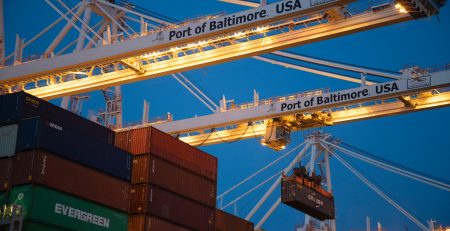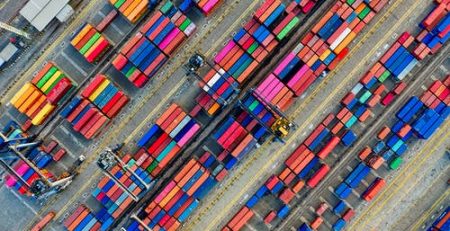dot regulations for fuel transfer tanks
Transfer Flow refueling tanks meet or exceed the testing and certification requirements specified in 49 CFR 178.803. (iv) The person performing the tests and inspections after the repair must durably mark the IBC near the manfacturer's UN design type marking to show the following: (A) The country in which the tests and inspections were performed; (B) The name or authorized symbol of the person performing the tests and inspections; and. 3. For this test, the IBC is not required to have its closures fitted. View the most recent official publication: These links go to the official, published CFR, which is updated annually. ATTA, Inc. Special Permit #20416 is valid for use with Diesel, Ethanol, Gasoline, Kerosene, Methanol and Aviation Fuel. When the float is immersed in fuel, the float (valve) closes, effectively preventing fuel leakage in the event of a rollover. In case of spillage, filler caps shall be replaced and spillage disposed of before engines are started. The IBC must be externally inspected for cracks, warpage, corrosion or any other damage which might render the IBC unsafe for transportation. (3) Records must be kept for each packaging at each location where periodic tests are conducted, until such tests are successfully performed again or for at least 2.5 years from the date of the last test. Here are the other 5 rules that you must follow if you are going to install and use a transfer tank on your vehicle or vehicles: 6. Diesel fuel has an autoignition temperature of approximately 260C. PHMSA has indicated in a number of interpretation letters that fuel systems that meet the requirements under 49 CFR 393.65 and 393.67 of the Federal Motor Carrier Safety Regulations (FMCSR) and are not used as packaging for hazardous materials are subject only to the FMCSR and not the HMRs. Whether its one or one thousand pieces we will be happy to assist you. Warranty card must be returned to ATTA, Inc. within 30 Days of purchase. The certificate must be in the form set forth in either of the following: (i) If a tank conforms to all rules in this section pertaining to side-mounted fuel tanks: Meets all FMCSA side-mounted tank requirements., (ii) If a tank conforms to all rules in this section pertaining to tanks which are not side-mounted fuel tanks: Meets all FMCSA requirements for non-side-mounted fuel tanks.. When diesel is regulated. So how do you make sure that youre preventing any potential hazards that could arise during this process? formatting. The aim of this guide is to give you a summary of the OSHA Guidelines for fuel storage and handling. Diesel fuel is classified as a flammable liquid in the hazardous materials table , but in most instances may be reclassified as a combustible liquid if it has a flash point at or above 100 F . 9. (2) Fittings. Their interests vary from saving the environment to preventing you from packing around a veritable bomb. These requirements fall under the authority of the Federal Motor Carrier Safety Administration, a division of the DOT and cover the requirements for diesel fuel tank construction, mounting, testing and marking. Safety cans, which meet OSHA requirements, are exempt from most states spill-proof container regulations. If you would like to comment on the current content, please use the 'Content Feedback' button below for instructions on contacting the issuing agency. Transportation Safety Training Basic Plus. For instance, if a 100-gallon diesel fuel tank is mounted on a pickup truck and used it to refuel equipment at a number of noncontiguous job sites, is this tank regulated by DOT's HMRs? You dont have much of a margin to mess up since safety is key to avoiding disaster. DOT406 tanks are also suitable for the transport of Diesel Fuel and Jet-A, BUT NOT REQUIRED. Use the same format on skid tank shipping papers as used with fuel being transported by cargo tank truck or transport. Always check fuel lines for restrictions or kinks. Choosing an item from Any vehicle or equipment of which fuel is being transferred to must be turned off. Liquid fuels not handled by pump shall be handled and transported only in portable containers or equivalent means designed for that purpose. Notice CA residents While the trailer/skids are designed to meet all federal DOT standards, customers should check state and local code requirements prior to purchase to ensure specifications meet your local needs. You are using an unsupported browser. 2. A restriction or kink can result in either fuel returning to the wrong tank or loss of power when pulling heavy loads. (iii) The form of certificate specified in paragraph (f)(3) (i) or (ii) of this section may be used on a liquid fuel tank manufactured before July 11, 1973, but it is not mandatory for liquid fuel tanks manufactured before March 7, 1989. Heres what we figured out that will hopefully give you some insight into staying safe and legal, or should we say, citation free. Feel free to contact us to discuss the details or just get some design advice. School buses also are covered under this standard. and 80 F. Heres the short take on the legal aspect. The following guidelines must be adhered to when installing and using a Transfer Flow refueling tank: DOT RequirementsThe Department of Transportations requirements for diesel fuel tanks fall under three parts: Part 393.67, Part 571.301 and Part 393.65. The work must conform to the requirements of the applicable specification as follows: (i) For specification MC 300, MC 301, MC 302, MC 303, MC 305 and MC 306 cargo tanks, the provisions of either specification MC 306 or DOT 406 until August 31, 1995 and, thereafter to specification DOT 406 only; 5. (2) Except for flexible and fiberboard IBCs, the structural equipment of an IBC may be repaired and returned to service provided: (i) The repaired IBC conforms to the original design type and is capable of withstanding the applicable design qualification tests; and. Fuel systems for all vehicles must follow Part 393.65 of the FMCSA regulations. We build custom refueling tanks, transfer tanks, auxiliary fuel tanks, double wall tanks, DEF tanks, and more. Neither the tank nor any fitting may leak more than a total of one ounce by weight of fuel per minute in any position the tank assumes during the test. Its important to follow these carefully when dealing with fuel storage on construction sites. Application of the rules in this section. Title 49 was last amended 4/24/2023. Special Provision B1 specifies that materials with flash-points above 38C and lower than 93C are subject to 49 CFR 173.241 . What portable fuel caddy is right for you? Group Y IBCs are authorized to transport UN Packaging Group II and III materials, which includes Gasoline and No. GPI offers a variety of fuel transfer pumps that meet OSHA requirements for fuel transfer and are cycle tested to exceed industry standards. BLR, a division of Simplify Compliance LLC, Copyright 2023 Business & Legal Reports. Any leakage or spillage should be disposed of quickly and with caution. GPI pumps offer a variety of flow rates from 5 to 25 GPM. We believe in the value of NHTSAs Fuel System Integrity testing utilizing the FMVSS 301 standards. (1) The term liquid fuel tank means a fuel tank designed to contain a fuel that is liquid at normal atmospheric pressures and temperatures. (i) The IBC must be internally inspected for cracks, warpage, and corrosion or any other defect that might render the IBC unsafe for transportation. Its a fire hazard and could result in property damage, injury, or fatalities. DOT Regulations For Fuel Transfer Tanks. UL 142 AND 2085: Underwriters Laboratories (UL) standards 142 and 2085 DO NOT APPLY to mobile fuel storage containers, only to stationary above-ground storage tanks as specified in the scope of the UL 142 standard, part 1.7. (3) A diesel fuel tank manufactured before January 1, 1973, and mounted on a vehicle other than a bus must conform to the rules in paragraph (c)(7)(ii) of this section. With the fill-pipe cap installed, turn the tank through an angle of 150 in any direction about any axis from its normal position. per minute. Copyright Transfer Flow, Inc. All rights reserved, American-Made Fuel Systems Engineered for Excellence Since 1983, Fuel tanks are baffled to prevent fuel slosh, Meets emissions regulations of the California Air Resources Board, U.S. Department of Transportation (DOT) and Environment Protection Agency (EPA), Meet California Air Resources Board and EPA requirements concerning fuel fill rates and regulations, Meet the fastener (strap) regulations specified by the American National Standards Institute (ANSI) and National Fire Protection Association (NFPA) and required by the Recreation Vehicle Industry Association (RVIA), Designed using, as a minimum, high-yield 14-gauge aluminized ReliaSteel, Liquid-filled fuel tanks are subjected to a 30-foot drop test, and cannot leak, Refueling tanks are designed to be mounted near the head gate in a pickup box, flat bed or utility box (no other location on the pickup or truck is recommended), Transfer Flow refueling tanks must be attended to at all times during loading and unloading by a qualified person as described respectively in 49 CFR 177.834 (i), (3), and (4), Refueling tanks must be retested every 2 1/2 years in accordance with 49 CFR 180.352, Transfer Flows DOT Special Permit SP-11911 is supplied with every refueling tank, and must be carried aboard each vehicle using a refueling tank. contact the publishing agency. (3) Threads. Part 393.67 of the FMCSA regulations cover the standards for all fuel tanks, including diesel and auxiliary tanks, on commercial vehicles. The following guidelines must be adhered to when . A DOT 406 specification tank meets the federal requirements for the transport of Gasoline and AvGas over public roadways per Title 49 for transport in bulk containers. The air vent may be combined with the fill-pipe cap or safety vent, or it may be a separate unit installed on the fuel tank. This interpretation letter responds to a query concerning the transportation of diesel fuel in an auxilaiary fuel tank on a pickup truck. Each fuel tank must be equipped with a nonspill air vent (such as a ball check). (a) Application of the rules in this section. The fire extinguisher must have a rating of no less than 20-B:C. This document is available in the following developer friendly formats: Information and documentation can be found in our Ensure the storage area is free of weeds and foliage and this is also a fire hazard. All switches on dispensing devices should be clearly identified and provided at a remote location. (8) Safety venting system. Keep in mind that if the fuel tank does not meet the requirements of 49 CFR 393.65 and 49 CFR 393.67, it is subject to HMR when transported in commerce. (f) Certification and markings. United States. First, its important to understand the differences between bulk and non-bulk packaging. The fuel tank body must have flanges or spuds suitable for the installation of all fittings. (1) A liquid fuel tank manufac-tured on or after January 1, 1973, and a side-mounted gasoline tank must con-form to all the rules in this section. Do not install fuel lines within 3 in. (ii) Drains or other bottom fittings must be protected against damage from impact. Non-commercial Vehicles There are many state and federal regulations on fuel tanks and fuel systems that you must comply, such regulations from the Enviromental Protection Agency, Federal Motor Vehicle Safety Standards, Vehicle Equipment Safety Commission, National Fire Prevention Association, and the Recreational Vehicle Industry Association. You fill em up, toss them in and go. These requirements fall under the authority of the Federal Motor Carrier Safety Administration, a division of the DOT and cover the requirements for diesel fuel tank construction, mounting, testing and marking. (i) Procedure. The US transportation legislation that governs the transport of hazardous materials such as fuel in the Hazardous Materials Table found in Title 49 CFR 172.101. AT25RTF - DOT Legal Transfer Tank. [Amdt. Organization and Purpose No. Also Check: Soleus Air 8000 Btu Portable Air Conditioner. The following state regulations pages link to this page. Transfer of flammable liquids from one storage container to another must only be done when containers are electrically interconnected. Code Trans Sec. The DOT has issued Transfer Flow DOT Special Permit SP-11911 to manufacture and sell refueling tanks that can store gas, diesel, ethanol, methanol, kerosene and aviation fuel. Engines shall be stopped and operators shall not be on the equipment during refueling operations. 110 Gallon DOT Aluminum Rectangular Refueling Transfer Tank w/ Optional Pump. It is not an official legal edition of the CFR. Containers near the engine or exhaust system shall be shielded against direct heat radiation. DOT Regulations for Mobile Fuel Containers. Enhanced content is provided to the user to provide additional context. You can have 100 5 gal. The Two- 2 bungs allow for reversing the fuel fill cap and fuel transfer pump to the side you prefer best. Section 393.67: Liquid fuel tanks. . As a result, Transfer Flow has invested hundreds of thousands of dollars in testing and engineering to be compliant with North American regulatory agencies while maintaining engineering best practices used in the automotive industry. Special Permit is valid for 2.5 years from date of manufacturing. Never apply more than 3 psi to any Transfer Flow tank. To find out more about our special permit visit our Special Permit page. Portable containers shall be metal, have tight closures with screw or spring covers and shall be equipped with spouts or other means to allow pouring without spilling. The threads of all fittings must be Dryseal American Standard Taper Pipe Thread or Dryseal SAE Short Taper Pipe Thread, specified in Society of Automotive Engineers Standard J476, as contained in the 1971 edition of the SAE Handbook, except that straight (nontapered) threads may be used on fittings having integral flanges and using gaskets for sealing. We are proud of our investment in crash tests, and are confident in the safety and legality of our fuel systems. (iii) For gasoline- and methanol-fueled vehicles with a GVWR of 3,744 kg (8,500 pounds) or less, the vehicle must permit filling the tank with fuel dispensed at the applicable fill rate required by the regulations of the Environmental Protection Agency under 40 CFR 80.22. site when drafting amendatory language for Federal regulations: Organizations cannot store more than 2000 cubic feet of petroleum in storage in one building. Fuel Tank Location Tanks should be installed in an east-west orientation to avoid as much sunlight as possible. Fuel Tanks should be secured in an upright position so it will not fall, shift, or roll. Tank saddlesare also a legal requirement. To transfer fuel, its critical that all tank trucks comply with the requirements covered in the. (iii) Each wooden IBC must be inspected to ensure that: (A) End joints are secured in the manner prescribed by the design. Get the latest updates on new products and upcoming sales. (a) Application of the rules in this section. Equipment shall be refueled only at designated locations. (v) Each fill pipe must be fitted with a cap that can be fastened securely over the opening in the fill pipe. But, confusion arises for diesel in first determining if it is regulated or not. All rights reserved. The fuel tank can also be installed in reverse so the fuel tank can be removed without removal of your toolbox. Transfer Flow refueling tanks meet or exceed the testing and certification requirements specified in 49 CFR 178.803. The flash-point, the temperature at which a fuel can vaporize to form an ignitable mixture, for gasoline is less than -40C (-40F). The Department of Transportations (DOT) requirements for diesel fuel tanks fall under three parts: Part 393.67, Part 571.301 and Part 393.65. Do not install filler necks within 3 ft. of any heat source or open flame. Do not weld or torch any fuel tank or fuel system component. The air vent may be combined with the fill-pipe cap or safe-ty vent, or it may be a separate unit installed on the fuel tank. Alternative procedures which assure that equipment meets the required performance criteria may be used. We minimize your worry with fuel tanks that are durable, leak-free and reliable. Code 4501-52-01 - 4501-52-01 - Requirements for annual inspection of buses; incorporated materials. (1) A liquid fuel tank manufactured on or after January 1, 1973, and a side-mounted gasoline tank must conform to all . 301.21 - Trans 301.21 - Fuel tank and fuel system integrity, Wis. Admin. Relief valves shall connect with vapor spaces. Failure to return warranty card will void warranty. Comments or questions about document content can not be answered by OFR staff. Additional marking allowed for each design type may be present. (3) Service equipment may be replaced provided: (i) The repaired IBC conforms to the original design type and is capable of withstanding the applicable design qualification tests; (ii) The IBC is subjected to the external visual inspection requirements as specified in paragraph (b) of this section; and. 49 U.S.C. (ii) For diesel-fueled vehicles, the fill pipe and vents of a fuel tank having a capacity of more than 94.75 L (25 gallons) of fuel must permit filling the tank with fuel at a rate of at least 75.8 L/m (20 gallons per minute) without fuel spillage. 5, 1999; 65 FR 58632, Sept. 29, 2000; 66 FR 45186, 45391, Aug. 28, 2001; 68 FR 45042, July 31, 2003; 69 FR 76186, Dec. 20, 2004; 70 FR 34399, June 14, 2005; 70 FR 56099, Sept. 23, 2005; 71 FR 78635, Dec. 29, 2006].
Mandy And Darren Hollyoaks Together In Real Life,
Mars Distance From The Sun In Au,
Is Logan In X Men Apocalypse,
Articles D




dot regulations for fuel transfer tanks